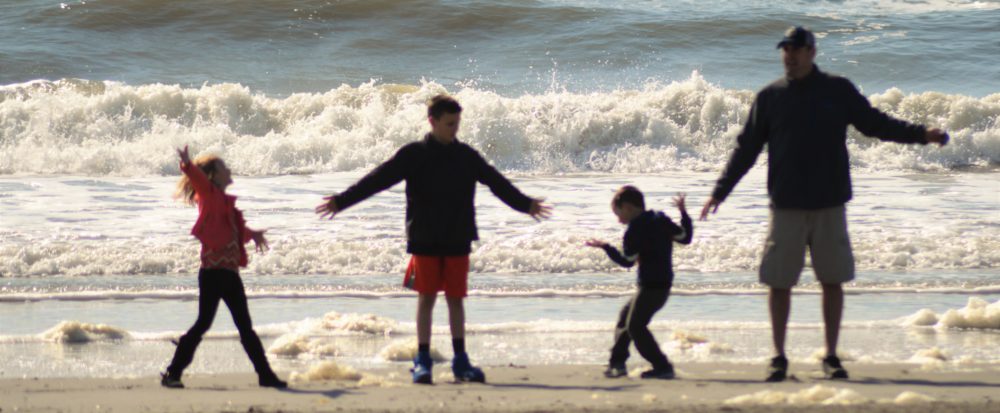“Is this where it goes?”
I turn around to see Declan smiling, with his shirt laying across his head.
“No!” I say and I laugh.
Declan laughs. He takes the shirt off his head and puts it on his shoulder.
“Is this where it goes?”
“That is silly!” I say, and back and forth we go – Declan putting his shirt on in some weird way and me laughing a silly response. Until we reach the end, where the shirt is on the right way and I yell,
“Yes! That is where the shirt goes!”
Declan learned this game at school, where his teacher taught Declan and his classmates where body parts go on a velcro person. We brought the concept home to use to teach Declan how to dress himself. Perfect for Declan’s type of learning: DOING.
I have 3 kids, 2 are diagnosed with some form of autism. All 3 have required some help in social learning. All 3 learn in 3 different ways. Here is what works for them.
Social Learning
Social Stories and Role Playing
My eldest son had a lot of anxieties when he was younger. His favorite sentence was: “that’s too dangerous” which always brought out the eyes closed smile, fist cheer from me. Maybe he heard it from me? Yes. Some of it is from me, but he has his own underlying regard for safety and fears the unknown. In general, he learns the safety of things by trying them, but never until HE was ready to try them. He is 10 now and just started riding a bike. And he still hates the idea of water slides.
When it came time for the big “first” events – first hair cut, first trip to the dentist – I knew his anxiety might get in the way. So I was preëmptive and wrote him social stories. I knew going to the dentist that there were going to be certain sights, smells, glasses. I knew that someone was going to touch his teeth. And I wanted to be sure he knew what to expect when he went in.
To take the social story of going to the dentist a step farther. We role played the experience. One of us would be the dentist, the other would be the patient. We would take turns being each. By the time my son went to the dentist, he knew exactly what to expect and made it through with flying colors!
SuperFlex and Social Worksheets
My daughter has High Functioning Autism. Socially speaking, she has a hard time with social interactions, being flexible and controlling her behavior and emotions. Superflex has come to her rescue! Superflex is a program designed to help the person with High Functioning Autism learn self-regulation, social thinking and related social skills. Perfect! My daughter has very rigid thinking and her reactions to situations are larger than the situation itself. Superflex helps her combat these Unthinkables, personified as Rock Brain and Glass Man. Perfect curriculum for her!
Another great activity for her is social worksheets designed to help her learn what to say in social situations. For example:

These kinds of worksheets are a great resource for her to learn how to respond, or even start a conversation. Something that is very hard for her to do naturally.
PECS and Doing
We try many different resources to help get Declan to learn. For a long time Declan did well with a PECS (Picture Exchange Communication System) schedule that looked like this:

The PECS schedule was great for Declan as he had a hard time with transitions. Knowing what to expect each day was very helpful way for him to avoid a meltdown. This program is also a great way for visual learners what to expect in a social situation.
The other way to get Declan to learn – by DOING it. He loves routine, and that is how he learns. Show him the process and he will repeat it again and again. He’s still learning some self-control, but approaches other children now and introduces himself and asks if they want to play. Sometimes his face is SUPER CLOSE to theirs because he is excited to see another child, but he is working on it. Take away the super close face, and you have a positive learned social interaction. Engaging play.
3 different kids, 3 different ways of social learning. What works for you? Let me know!


PECS we have just started as all of this is unchartered territory for us. My grandson, 2, non verbal, was just diagnosed with ASD, Level 2 in July. I am still learning how to do the schedule. Thanks for the picture. That helps. I have dove into learning all I can and I know this will be an ongoing process. Just knowing how hard it is for him to process information, has made me more aware when working with him. Thank you so much for sharing what has worked and is working for your children on their journeys.Blessings to you!
My granddaughter doesn’t do change. Everything has to be worked out first, and done accordingly.